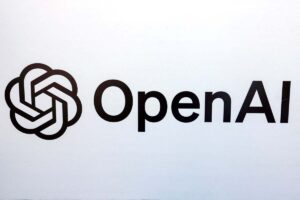Uncertain Future of OpenAI’s Profit Growth

OpenAI: A Look at Its Profit Trajectory
Understanding OpenAI’s Business Model
OpenAI, an organization notorious for its cutting-edge technology, particularly in artificial intelligence (AI), has generated significant attention for its breakthroughs. The company operates under a unique business model that mixes profit and non-profit elements. It primarily focuses on developing AI systems that can perform various tasks, offering innovative solutions to both individuals and businesses.
The Mixed Funding Structure
OpenAI began as a non-profit organization but transitioned to a "capped-profit" model in 2019. This model permits investors to receive a return on their investment up to a certain limit, after which any additional profit is directed to advancing the organization’s mission. This approach aims to attract capital while remaining true to OpenAI’s foundational goal of promoting and developing friendly AI for the benefit of humanity.
Exploring Revenue Streams
OpenAI’s financial trajectory relies on several revenue streams, including:
Commercial Licensing: OpenAI licenses its technology to various companies, allowing them to integrate advanced AI into their operations.
Subscription Services: The organization offers subscription models for users to access its services, including OpenAI’s models like GPT-3.
Partnerships: Collaborations with tech giants, such as Microsoft, have provided substantial funding and opportunities for jointly developed products.
- Research Grants and Scholarships: OpenAI also receives funding through grants aimed at furthering AI research and development.
Market Competitiveness and Challenges
Despite its success, OpenAI faces intense competition within the AI field. Numerous companies are vying for leadership, including established tech firms and startup innovators. The fast-paced nature of technology development necessitates constant evolution and improvement to stay ahead:
Tech Giants: Rival companies with immense resources can pose a significant threat, compelling OpenAI to innovate continuously.
- Regulatory Environment: As AI technology evolves, regulatory frameworks are also developing. Compliance with new laws could affect profitability.
Future Prospects
The future of OpenAI’s profitability is uncertain but intriguing. Various factors could contribute to its success:
Continued Technology Advancements: Improvement and expansion of AI capabilities increase the potential for revenue generation.
Broader Adoption: As more industries recognize the benefits of AI, OpenAI’s market could expand, leading to higher profits.
- Community Engagement: OpenAI’s focus on ethical AI and community involvement can enhance its reputation and open up collaborations that may lead to financial success.
Industry Insights
Many industry experts speculate that OpenAI’s dual approach could influence the broader AI landscape. The push for ethical AI might also attract socially conscious investors and consumers. The dynamic nature of technology suggests that while challenges are present, opportunities are equally abundant.
Key Considerations for Investors
For potential investors and stakeholders, it is crucial to consider a few essential points before engaging with OpenAI:
Risks vs. Rewards: Understanding the inherent risks associated with the AI sector is vital given the fluctuating market dynamics.
Commitment to AI Ethics: The organization’s dedication to responsible AI development may resonate well with consumers, impacting long-term loyalty.
- Evolving Market Trends: Keeping abreast of AI trends can lead to informed decisions regarding engagement with OpenAI.
In summary, as OpenAI navigates its path in the AI industry, its revenue potential will depend on its ability to innovate, maintain competition, and uphold its mission of responsible AI development. The complexities of the market create a rich environment for observation, presenting both challenges and opportunities on its journey toward profitability.






